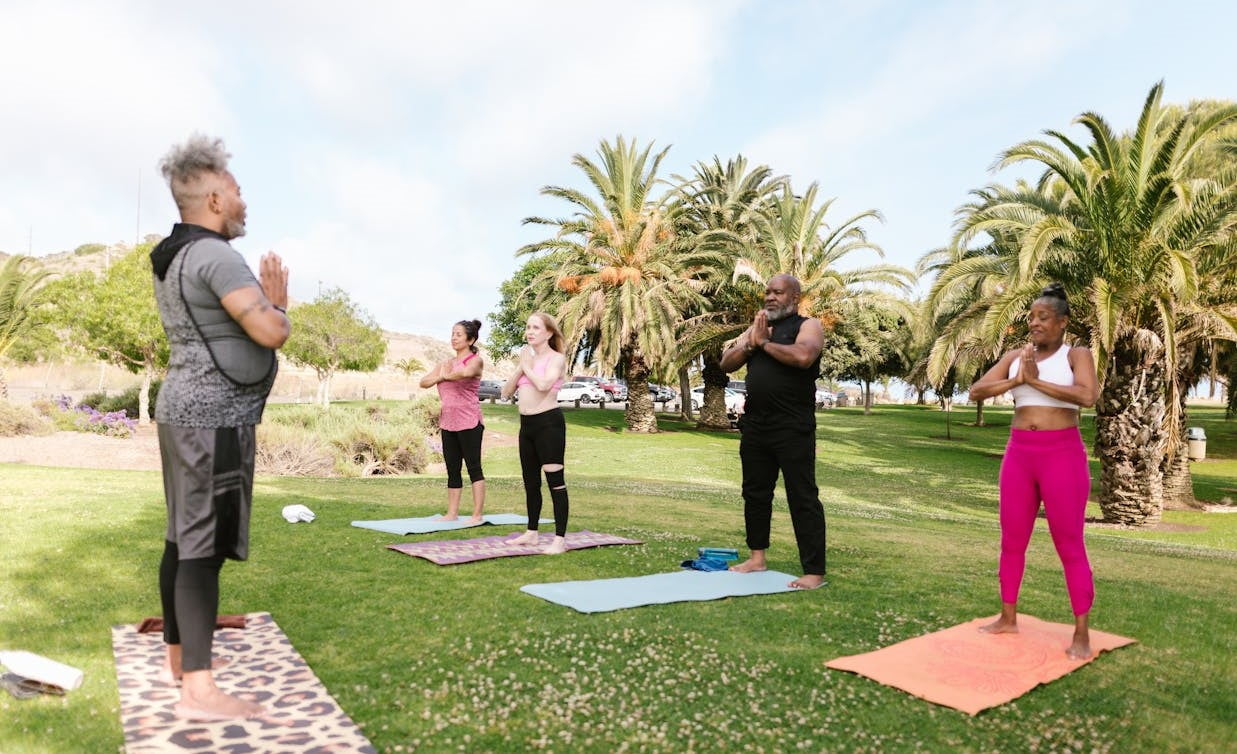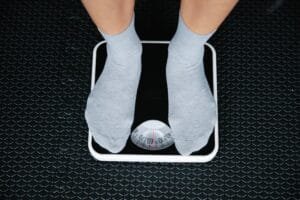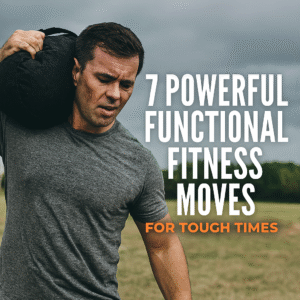Last Updated on November 17, 2025 by shawnshealth
Calisthenics for seniors made simple—boost strength, mobility, and vitality with 7 powerful exercises you can do at home, no equipment needed!
Calisthenics for Seniors: 7 Powerful Exercises to Boost Strength and Vitality
Aging gracefully and maintaining physical fitness are goals many seniors aspire to achieve. Calisthenics for seniors offers a versatile and effective way to stay active, build strength, and enhance overall vitality without the need for expensive gym memberships or complicated equipment. This article explores seven powerful calisthenics exercises tailored specifically for seniors to help you stay strong and healthy.
📚 Want the Bigger Picture? Start with These Guides
Before diving into the exercises below, you might want to explore two foundational resources:
- 🧠 The Ultimate Calisthenics FAQ Everything you need to know about bodyweight training—from technique and progression to recovery and common mistakes. Perfect for beginners and seasoned movers alike.
- 🪑 Senior Fitness: 15 Essential Principles Explore safe, empowering routines for older adults that focus on strength, mobility, and long-term vitality. A great companion to the exercises in this post.
What are the best calisthenics exercises for seniors?
The best calisthenics exercises for seniors improve strength, mobility, and balance. Key options may include:
- Chair squats
- Wall push-ups
- Seated leg lifts
- Standing marches
- Step-ups
- Bird-dog
- Wall angels
Each can be modified for comfort and ability.
Why is calisthenics good for seniors?
Calisthenics for seniors supports healthy aging by:
- Building functional strength
- Improving joint mobility
- Enhancing balance and stability
- Supporting heart health
- Reducing fall risk
It’s low-impact, accessible, and requires no equipment.
🛒 Quick Tip: Looking for fitness gear? Browse top-rated equipment on Amazon to power up your workouts fast 💪
As an Amazon Associate, I earn from qualifying purchases.
How can seniors start a safe calisthenics routine?
To start safely, seniors should:
- Begin with gentle, low-impact movements
- Warm up before each session
- Focus on proper form
- Start with 2–3 sessions per week
- Gradually increase intensity
- Consult a doctor if needed
Consistency is key to lasting benefits.
💪 Staying Strong After 60 Discover how bodyweight strength training can help you stay active, build muscle, and feel confident at any age. Check out my full article on Staying Strong After 60 for practical tips and empowering routines designed to support lifelong vitality.
Table of Contents
Medical Disclaimer: This content is for informational purposes only. Consult a healthcare professional before making any health or fitness changes.
Amazon Affiliate Disclaimer: As an Amazon Associate, I earn from qualifying purchases.
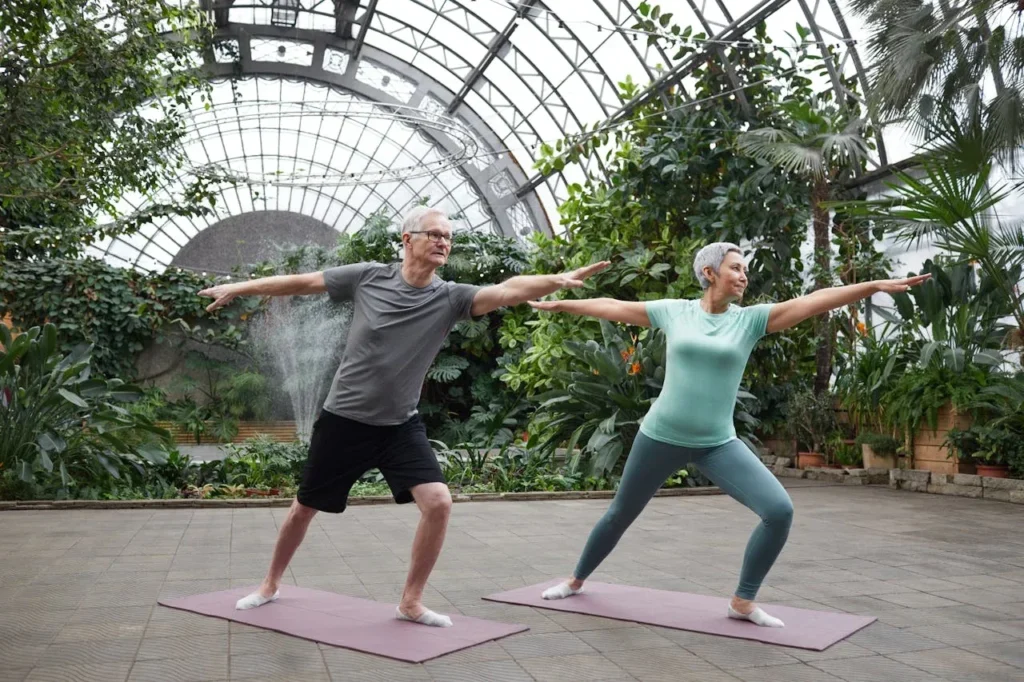
Calisthenics for Seniors: My Story
I never thought it would happen to me. Getting old. Hitting the big 4-0, then the 5-0, and now, just a few months away from the 6-0! Yet, here I am, and either you are too, you’re going to be, or you’ve passed me up!
In spite of battling the mid-bulge for a good share of my life, I have learned through trial and error, much study, and using my body as a human guinea pig, that it doesn’t matter your age. You can always improve your health, fitness, strength, agility, and endurance!
Stop worrying about not being as fit as you were 20 years ago. Just consider how fit you were yesterday, then do a little something to make yourself better today. Only compete with you. When you get discouraged because you can’t do a pushup on the floor yet or run a marathon (now you’re just showing off), picture yourself not doing anything. Just sitting on the couch day after day eating chips, and ice cream. That’s the person you compete against!
Consistency is key. Start a good program (like the examples described here) and get going. It’s not about how much you exert yourself, and groan from pain and suffering (the neighbors will call the police if you work out too loudly, especially at your age). It’s so much more important that you try to do just a bit more than last time. Then repeat 2 – 5 times each week. Keep a journal so that you can look back and realize how much progress you’ve actually made.
So, get going. Get with the program. Put the consistent time into it and improve your overall health, fitness, strength and most of all, your quality of life!
Why Calisthenics for Seniors?
Calisthenics involves bodyweight exercises that improve strength, flexibility, balance, and endurance. These exercises are particularly beneficial for seniors because they can be easily modified to suit different fitness levels and physical abilities. Additionally, calisthenics can be performed anywhere, making it a convenient and cost-effective way to stay fit.
🏋️ Want to Go Deeper with Calisthenics? Check out my article on Calisthenics Strength Training for a full breakdown of bodyweight exercises that build real-world strength. It’s packed with tips, progressions, and routines to help you move better, train smarter, and stay strong—at any age.
Benefits of Calisthenics for Seniors
- Improved Strength: Calisthenics exercises like push-ups and squats engage multiple muscle groups, helping to maintain and build muscle mass.
- Enhanced Flexibility: Stretching exercises improve joint mobility and reduce the risk of injuries.
- Better Balance: Balance exercises, such as single-leg stands, can help prevent falls, a common concern for seniors.
- Increased Endurance: Regular calisthenics routines boost cardiovascular health and overall stamina.
- Mental Health: Physical activity releases endorphins, which can improve mood and reduce feelings of depression and anxiety.
🧠 Aging Well Through Exercise Want to understand how physical activity supports healthy aging at the cellular level? This Mayo Clinic article explains how regular movement can reduce senescent cells, boost strength, and improve cognitive health—especially for older adults looking to stay active and resilient

Getting Started with Calisthenics for Seniors
Before starting any new exercise routine, it’s essential to consult with a healthcare provider, especially if you have existing health conditions. Once you have the green light, follow these tips to get started safely:
- Warm-Up: Begin with a 5-10 minute warm-up to get your muscles ready. This can include marching in place, gentle arm circles, or light stretching.
- Start Slow: Gradually increase the intensity and duration of your workouts. Start with easier variations of exercises and progress as you build strength.
- Listen to Your Body: Pay attention to how your body feels during and after exercise. It’s normal to feel some discomfort, but stop if you experience sharp pain or dizziness.
- Stay Consistent: Aim to exercise at least 3-4 times a week to see the best results.
⚠️ Avoid Common Calisthenics Mistakes Want to make faster progress and stay injury-free? Check out my article on mistakes to watch out for in your calisthenics routine to learn what to avoid—from poor form and overtraining to skipping recovery. A few smart tweaks can make a big difference.
7 Powerful Calisthenics Exercises for Seniors
1. Wall Push-Ups
Wall push-ups are a great starting point for building upper body strength without the strain of traditional push-ups.
- How to do it: Stand facing a wall, about arm’s length away. Place your hands on the wall at shoulder height and width. Bend your elbows and lean towards the wall, then push back to the starting position.
- Reps: Aim for 10-15 repetitions.
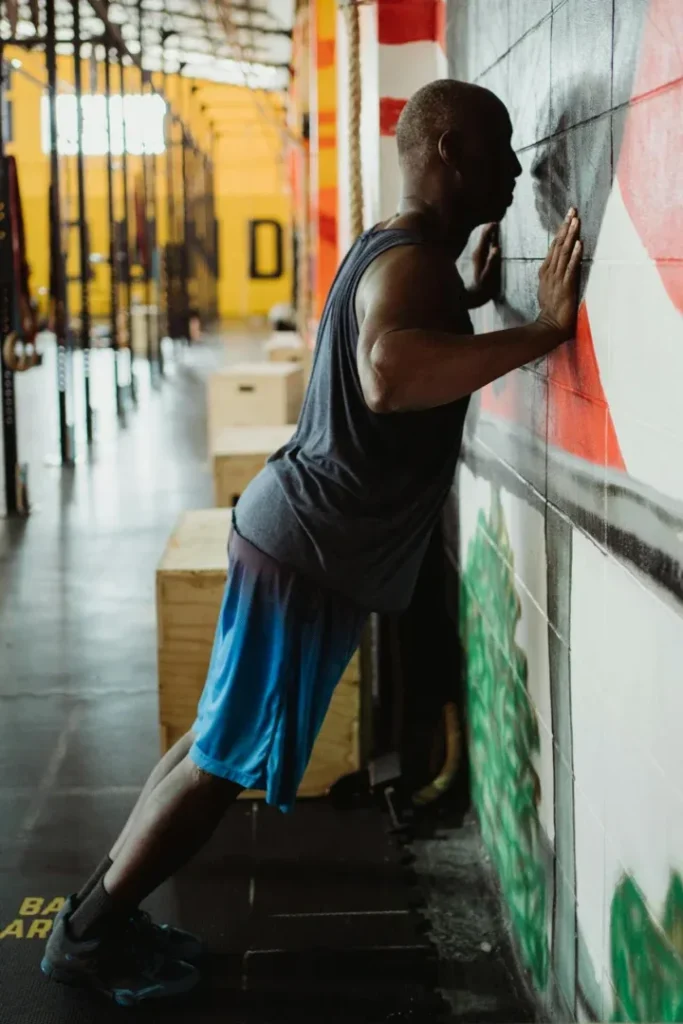
2. Chair Squats
Chair squats strengthen the legs and improve balance, making everyday activities like standing up from a chair easier.
- How to do it: Stand in front of a chair with your feet shoulder-width apart. Lower yourself into a squat position as if you’re about to sit down, then stand back up.
- Reps: Aim for 10-15 repetitions.
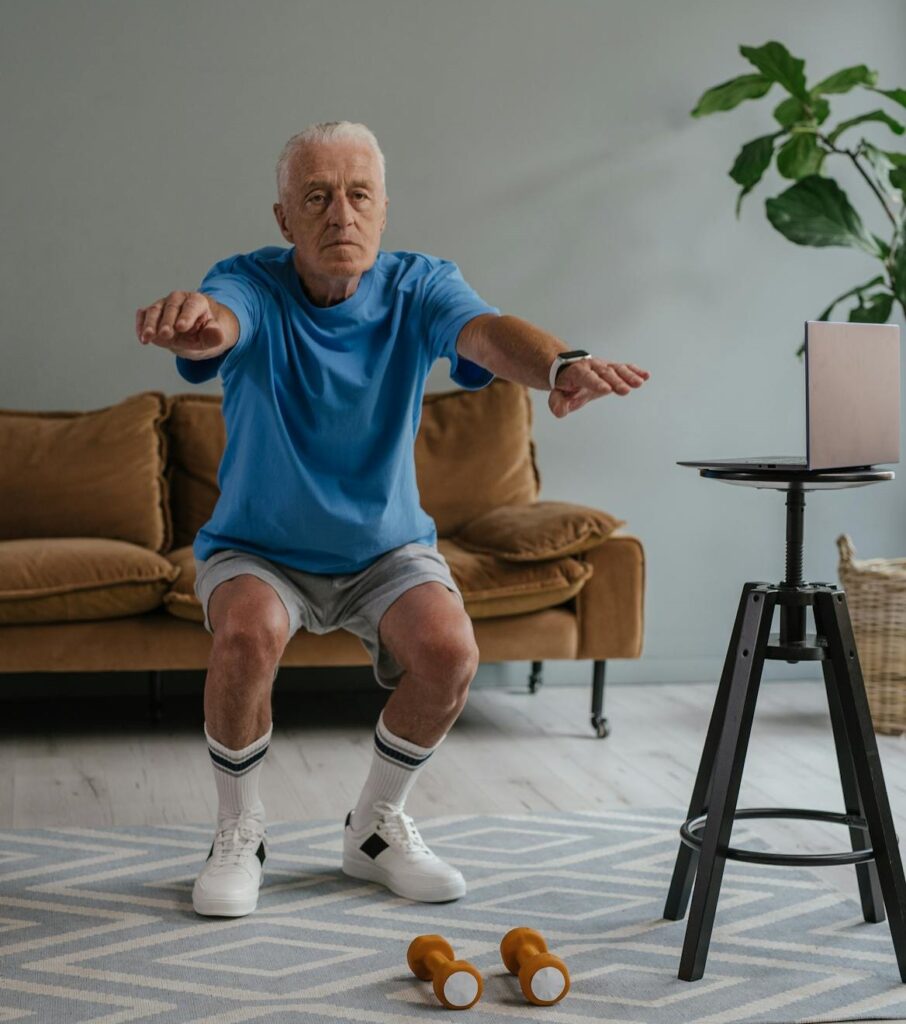
3. Seated Leg Lifts
This exercise targets the muscles in the legs and lower abdomen, helping to improve core strength and stability.
- How to do it: Sit in a chair with your back straight and feet flat on the floor. Lift one leg straight out in front of you, hold for a few seconds, then lower it. Repeat with the other leg.
- Reps: Aim for 10 repetitions on each leg.
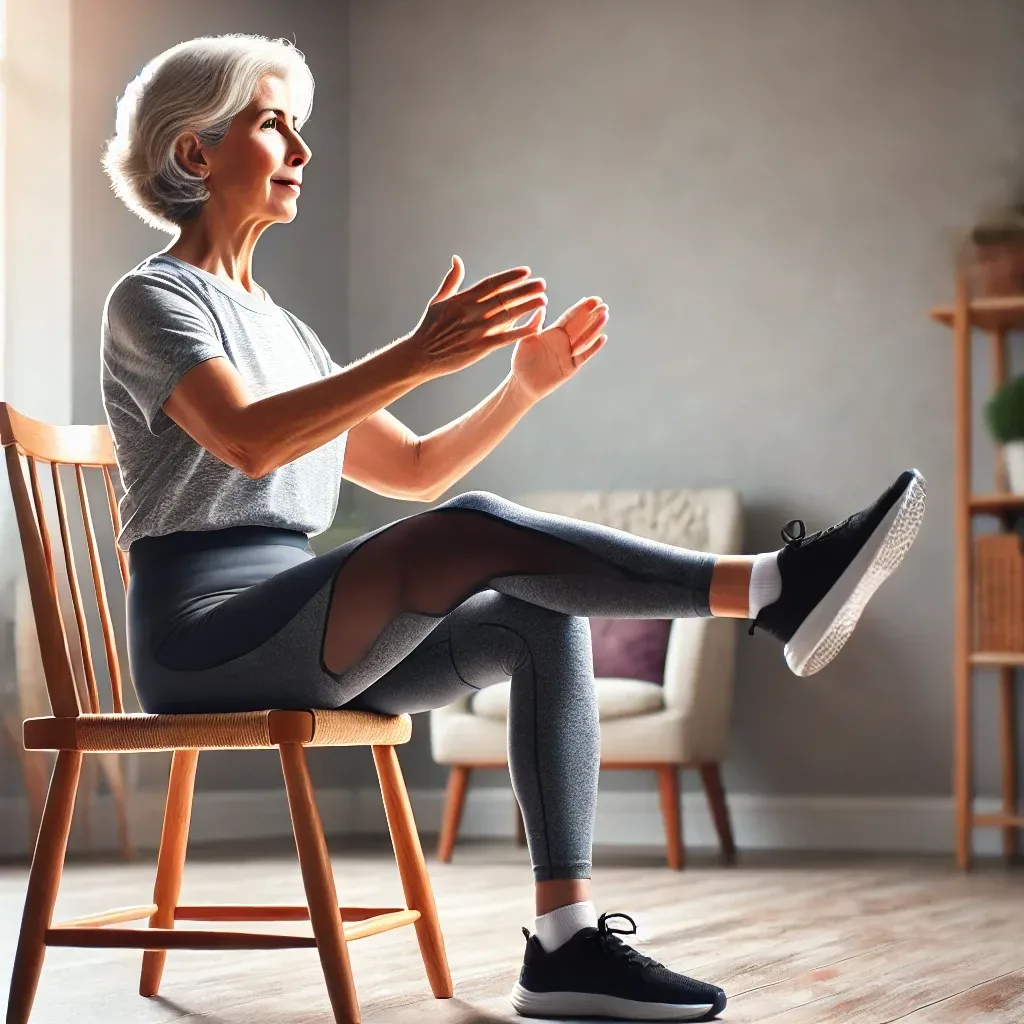
4. Standing March
Standing marches are excellent for cardiovascular health and leg strength, and they can be done anywhere.
- How to do it: Stand with your feet hip-width apart. Lift one knee to hip height, then lower it and repeat with the other leg, mimicking a marching motion.
- Reps: March for 1-2 minutes.
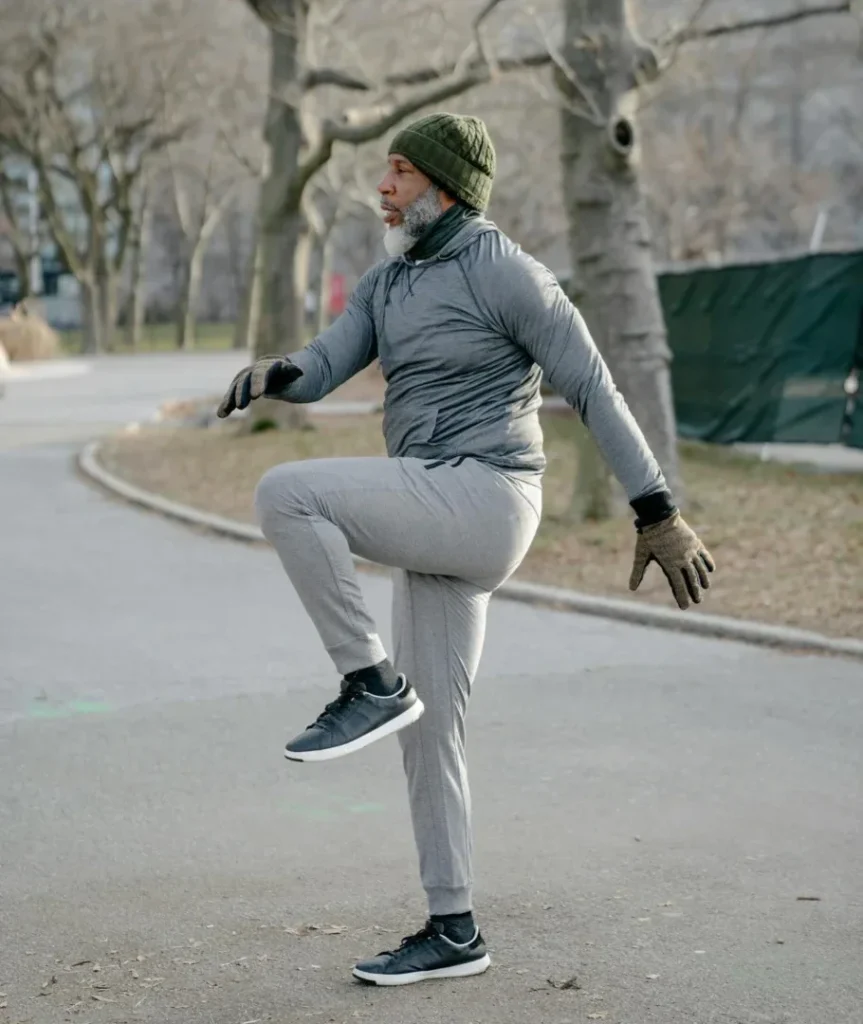
5. Arm Circles
Arm circles are a simple way to improve shoulder flexibility and strength.
- How to do it: Stand with your feet shoulder-width apart and extend your arms out to the sides. Make small circles with your arms, gradually increasing the size of the circles. Reverse the direction after 30 seconds.
- Duration: Perform for 1 minute.
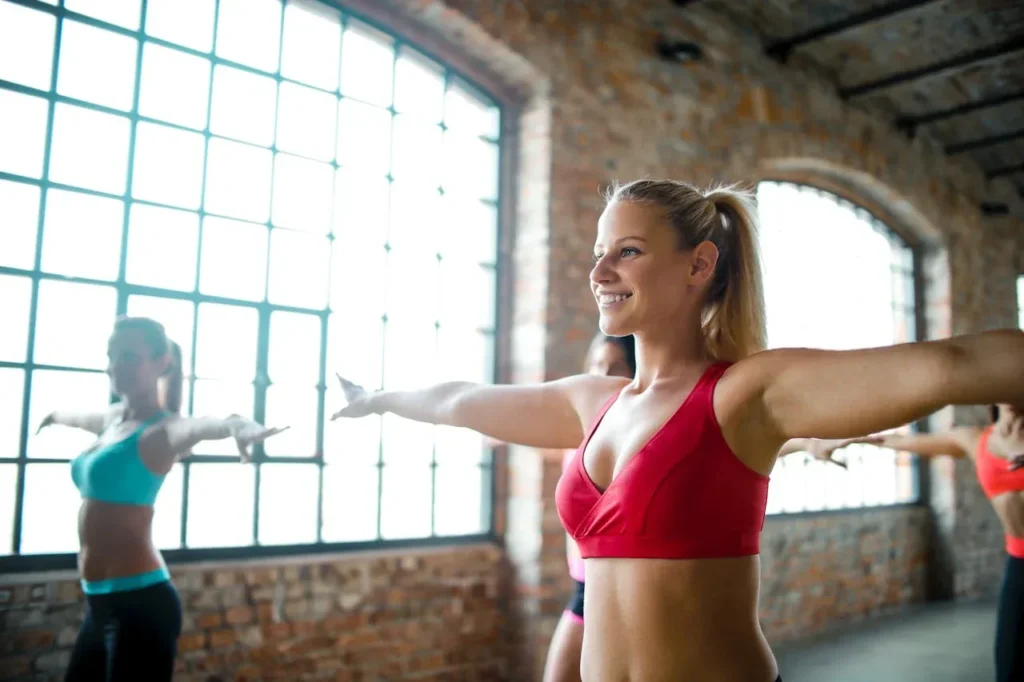
6. Heel Raises
Heel raises strengthen the calves and improve balance, which is crucial for preventing falls.
- How to do it: Stand with your feet hip-width apart and hold onto a chair for support. Raise your heels off the ground, then lower them back down.
- Reps: Aim for 15-20 repetitions.
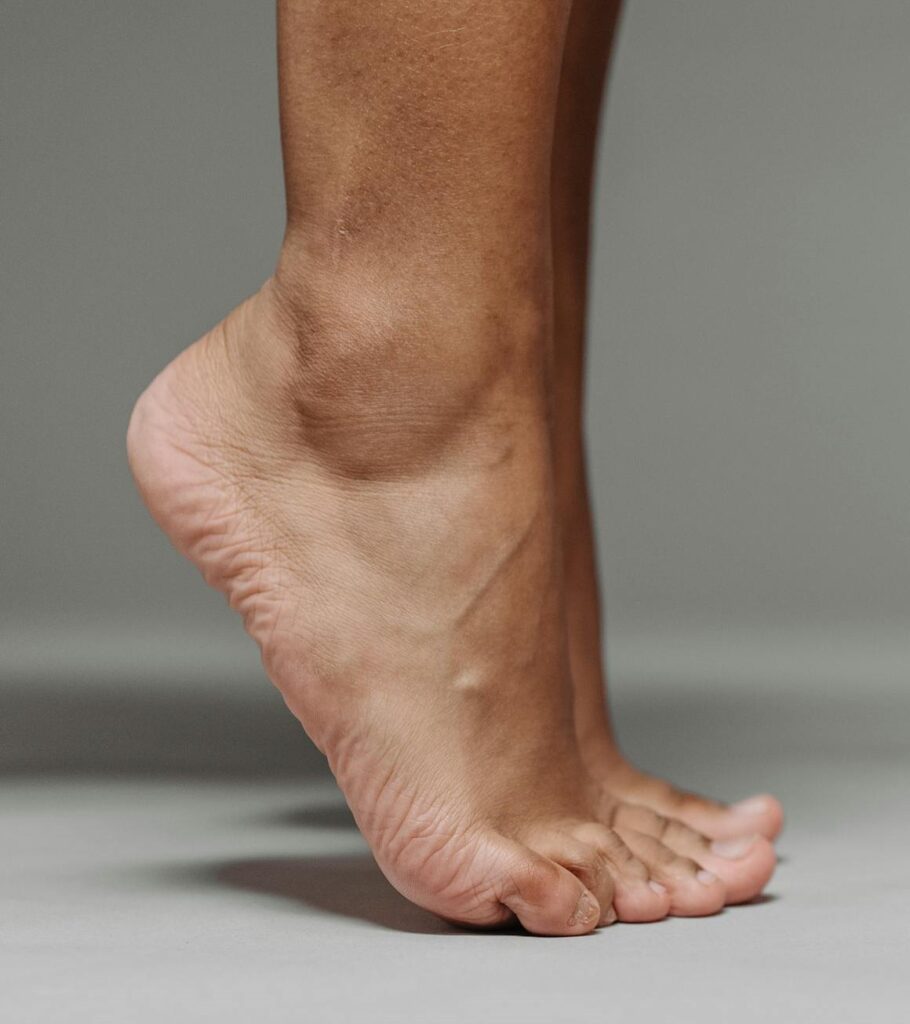
7. Single-Leg Stands
This exercise challenges balance and strengthens the stabilizing muscles in the legs.
- How to do it: Stand near a wall or chair for support. Lift one foot off the ground and hold the position for as long as possible. Switch legs and repeat.
- Duration: Hold each leg for 15-30 seconds.

Tips for Success with Calisthenics for Seniors
- Stay Hydrated: Drink plenty of water before, during, and after your workouts to stay hydrated.
- Dress Comfortably: Wear comfortable, breathable clothing and supportive footwear to prevent injuries.
- Incorporate Variety: Mix up your exercises to target different muscle groups and keep your routine interesting.
- Join a Group: Exercising with a group can provide motivation, accountability, and social interaction.
🏃♂️ Fitness for Older Adults – ACE Insights Want expert-backed strategies to help older adults stay strong, mobile, and independent? This article from the American Council on Exercise outlines how bodyweight training, cognitive health, and behavior change can support aging well. It’s a great complement to your senior fitness content—especially for readers seeking safe, effective routines with long-term impact.
🎥 Need a Boost? Watch this motivational video from Body Fix Exercises for practical inspiration and movement tips—especially helpful if you’re over 50 and ready to feel stronger, looser, and more confident.
Additional Exercises to Consider
Here are a few more exercises to diversify your calisthenics routine:
8. Cat-Cow Stretch
This yoga-inspired stretch improves flexibility and relieves tension in the spine.
- How to do it: Get on your hands and knees. Arch your back (like a cat) and then drop your belly towards the floor (like a cow). Alternate between the two positions slowly.
- Reps: Perform for 1-2 minutes.
9. Glute Bridges
Glute bridges strengthen the hips and lower back, improving overall stability.
- How to do it: Lie on your back with your knees bent and feet flat on the floor. Lift your hips towards the ceiling, hold for a few seconds, then lower them back down.
- Reps: Aim for 10-15 repetitions.
10. Bird-Dog
This exercise enhances core strength and balance.
- How to do it: Get on your hands and knees. Extend your right arm and left leg simultaneously, hold for a few seconds, then switch sides.
- Reps: Aim for 10 repetitions on each side.
💪 How to Get Strong and Stay Strong After 60 This guide from More Life Health breaks down how older adults can build muscle, boost confidence, and move through life with ease—using bodyweight, resistance bands, or weights. It’s a powerful reminder that strength is always within reach, no matter your age.
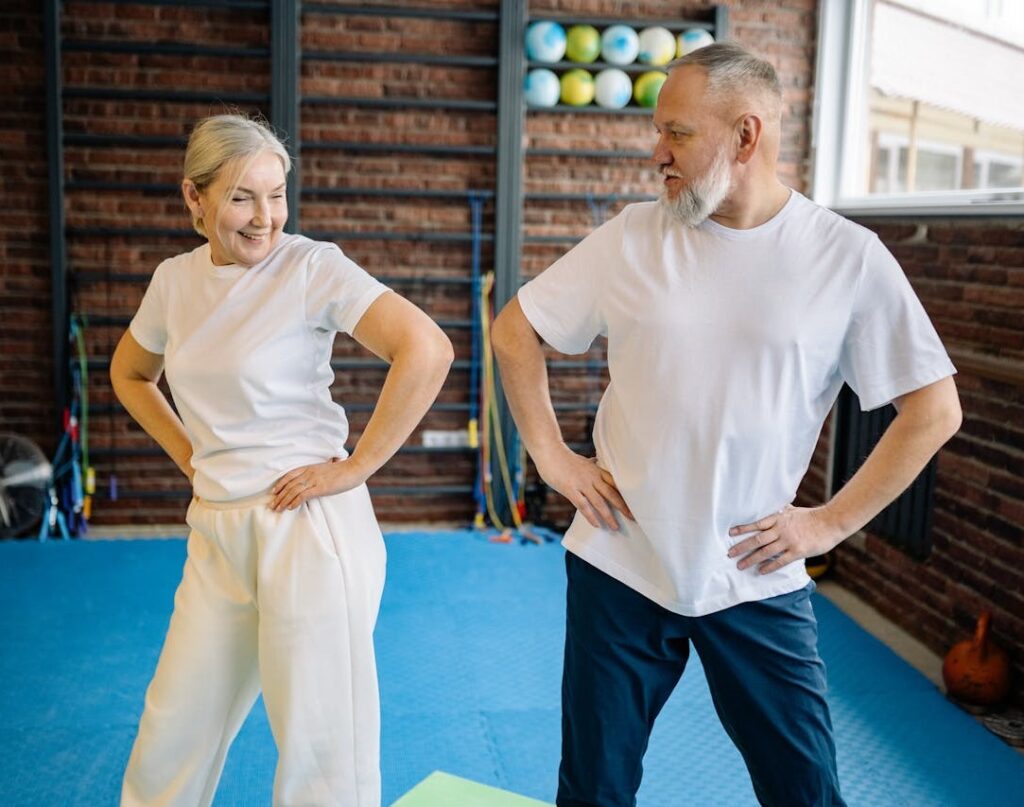
Conclusion
Incorporating calisthenics for seniors into your daily routine can lead to significant improvements in strength, balance, flexibility, and overall well-being. These ten powerful exercises are designed to be safe, effective, and adaptable to your fitness level. Remember to start slow, listen to your body, and stay consistent to reap the full benefits of your effort!
By integrating these exercises into your routine, you’ll be well on your way to a stronger, more vibrant you. Embrace calisthenics for seniors and unlock the full potential of your golden years!
🔥 Gear to Help You Achieve Your Health and Fitness Goals 💪
If you’re looking for tools to enhance your fitness journey, check out this. Explore top-rated fitness gear on Amazon to enhance your workouts. Check out the latest picks here! 🛒 to support your workouts and progress.
🚀 Find equipment designed to boost strength, endurance, and overall performance!
⚠️ Short disclaimer: As an Amazon Associate, I earn from qualifying purchases.
People Also Ask
1. What is calisthenics for seniors?
- A form of exercise using bodyweight to improve strength and mobility
- Low-impact and joint-friendly
- Ideal for older adults to stay active without equipment
2. Can seniors build strength with bodyweight exercises?
- Yes, bodyweight exercises build functional strength
- Improves muscle tone, balance, and stability
- Helps maintain independence and mobility
3. How often should seniors do calisthenics?
- 2 to 3 times per week is ideal
- Include rest days between sessions
- Consistency is more important than intensity
4. Is calisthenics safe for older adults?
- Yes, when done with proper form and progression
- Start with basic movements and increase slowly
- Check with a doctor if you have health conditions
5. What calisthenics are easiest for beginners?
- Chair squats
- Wall push-ups
- Seated leg raises
- Standing marches
6. Do seniors need equipment for calisthenics?
- No, most exercises use bodyweight only
- A sturdy chair or wall can be helpful
- Great for home workouts or limited spaces
🚀 Ready to Keep Progressing?
If today’s exercises got you moving, there’s even more waiting for you. Dive into The Ultimate Calisthenics FAQ for a complete guide to bodyweight training—covering technique, progression, recovery, and common mistakes.
And if you’re looking for routines designed to support older adults, the Senior Fitness: 15 Essential Principles post offers safe, empowering strategies to help you stay strong, mobile, and confident.
Your next milestone starts now.
And we know that all things work together for good to those who love the Lord, to those who are called according to His purpose. – Romans 8:28

